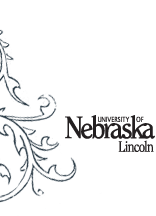Londa Schiebinger, Nature's Body: Gender in the Making of Modern Science from Chapter 5, "Theories of Gender and Race" (1993)
Transcribed from pages 175-177 and 178-179 of Londa Schiebinger's Nature's Body: Gender in the Making of Modern Science. Published by Beacon Press, 1993.
1.
"In France, property-owning, tax-paying males of various ethnic origins (including Jews) succeeded in their quest for political representation when in 1791 all men residing in France received the rights of active citizens: 'Every man, of whatever color, whatever origin, of whatever country he be, will be free and will enjoy the rights of an active citizen in France, if he meets in other respects the conditions required by the Constitution.' Armed revolt in Saint Dominque leaving 2,000 whites and over 10,000 slaves dead brought full equality to mulattoes and free blacks on that island in 1792. Finally, the National Convention, pushed forward by the war with Spain and the threat of an English invasion, abolished slavery in all French colonies in a slow and painful process. On June 21, 1793, male slaves who agreed to be inducted into the army were freed. Their wives and children were freed some weeks later. On February 4, 1794, slavery at last was abolished in all French colonies. Nearly a million slaves suddenly became citizens (and many of them soldiers) of France. That same year three delegates from Saint Domingue (a negro, a mulattoe, and a white—all male) were seated by the National Convention in Paris. Momentarily, men of color entered the public realm of heroic manhood.
As subsequent history has shown, these victories were Pyrrhic. Slavery and the color line were reinstated in French colonies in 1802 (with the exception of Saint Domingue, which declared its independence from France in 1804), and even when rights were restored in 1848, they did not ensure social equality. Nonetheless, in the same way that scientific debates about race centered on males, it was fraternité, not humanité, that was celebrated alongside egalité and liberté in the great bourgeois revolution of this era. This is nowhere more evident than in the iconography surrounding racial consanguinity. Though feminine icons of liberty loomed large in this period, male figures, either innocent babes or grown men, dominated portrayals of the 'fraternity of colors.' Guillaume-Thomas Raynal featured male infants—one black, one white—suckling the many breasts of Nature in his (1774) Histoire philosophique et politique...dans les deux Indies. Hugh Honour has pointed out that the racial diversity of these infants was unprecedented. Colonial relationships, by contrast, were often portrayed using female figures as in William Blake's depiction of Europe supported by Africa and America" (175-177).
"French women taken collectively emerged from the Revolution with fewer rights and privileges than they had had under the Ancien Régime....The fall of women from public grace was replayed in republican iconography. The year of de Gouge's execution, 1793, also saw the fall of the mythic Marianne as the miltant and female embodiment of the republic and the ascent of a masculine Hercules on the state seal. This was also the year that male deputies celebrated the first anniversary of the republic by publicly drinking the symbolic milk of regeneration from Isis's maternal breasts" (178-179).





 Coins
Coins Commentary
Commentary Fiction
Fiction Historical documents
Historical documents Illustrations &
Cartoons
Illustrations &
Cartoons Paintings
Paintings Poetry
Poetry Sculpture
Sculpture Seals
Seals